Period
Role
Lead Product Designer

Objective
- Incorporate digital assets into Samsung Wallet, allowing users to track and monitor cryptocurrency values within their portfolio from multiple external exchanges.
Responsibilities
- Partnered with cross-functional teams to create user-centered product timelines and revamped the design strategy to support various services, including digital assets, as a comprehensive digital wallet.
Results
- Samsung Wallet replaced Samsung Pay, supporting various passes, IDs, and digital assets in June 2022, and expanded to 29 countries, including 8 new markets. (Samsung Newsroom U.S. Link 1, Link 2)
- After launching, we observed a 4% increase in the number of Samsung Blockchain Wallet users, and almost 7% of Samsung Wallet users have added at least one external exchange in Korea.
Since blockchain has been a buzzword in the tech and finance industry over the last few years, Samsung has steadily built various blockchain-powered services. In 2019, the company announced the Samsung Blockchain Wallet, along with the blockchain-enabled flagship Galaxy S10.
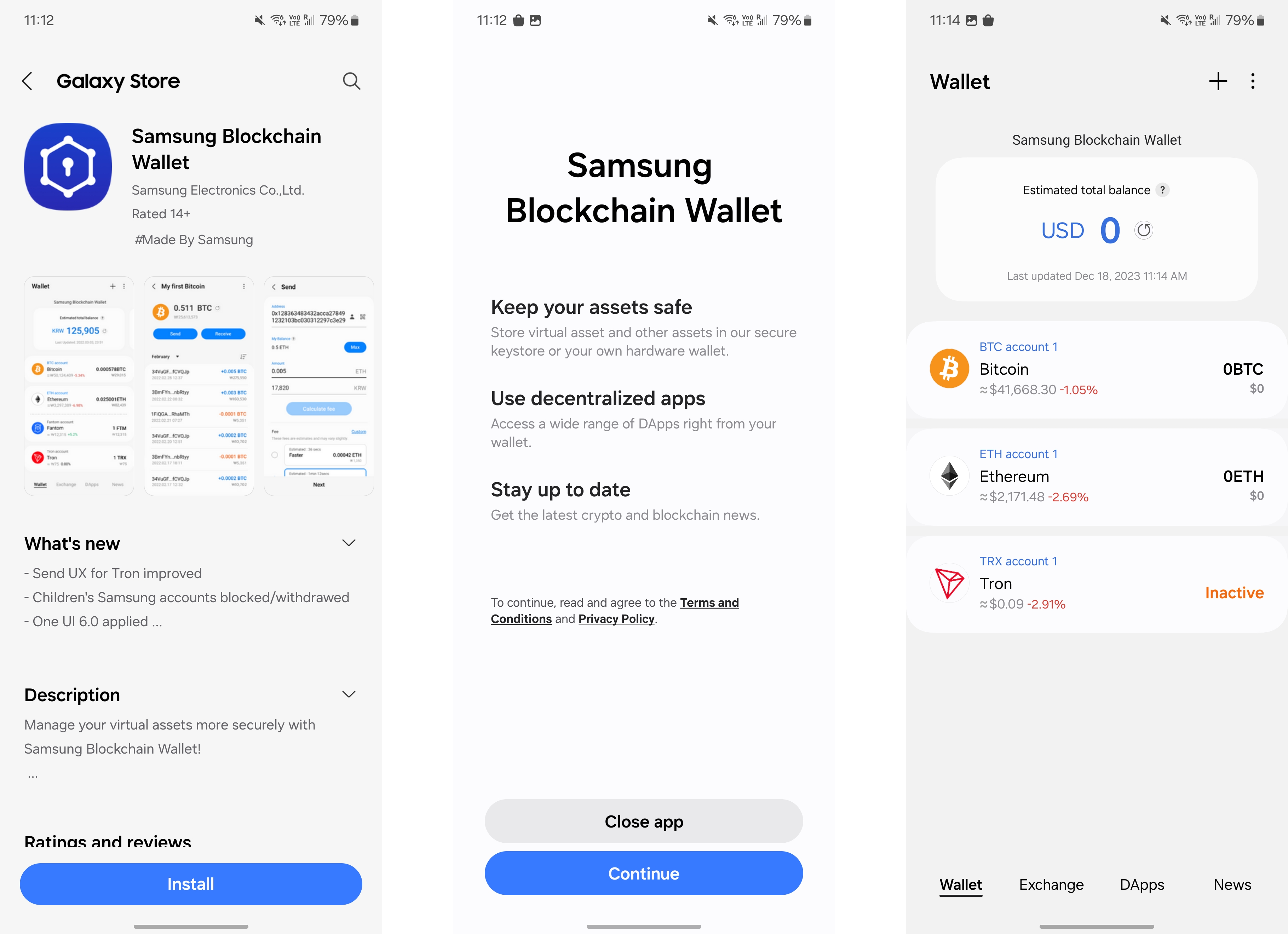
In the meantime, Samsung Pay has broadened its partnership ecosystem with various businesses and service providers, offering greater flexibility and convenience. As this ecosystem has grown beyond financial services, the company has decided to rebrand Samsung Pay to represent a comprehensive digital wallet service capable of storing digital keys, passes, and more. The integration of Blockchain Wallet with the new service was also under consideration.
The problem
- The purpose of Blockchain Wallet was to enable users to facilitate cryptocurrency transactions and provide easy access to blockchain-based applications on their smartphones. It also supports managing and trading digital assets from third-party hardware wallets, which was challenging to implement in the new service due to security concerns.
- Internal user research indicated that most users store their digital assets in external cryptocurrency exchanges for easy access and trading as needed. Therefore, we received feedback to support tracking their portfolios from more significant exchanges.
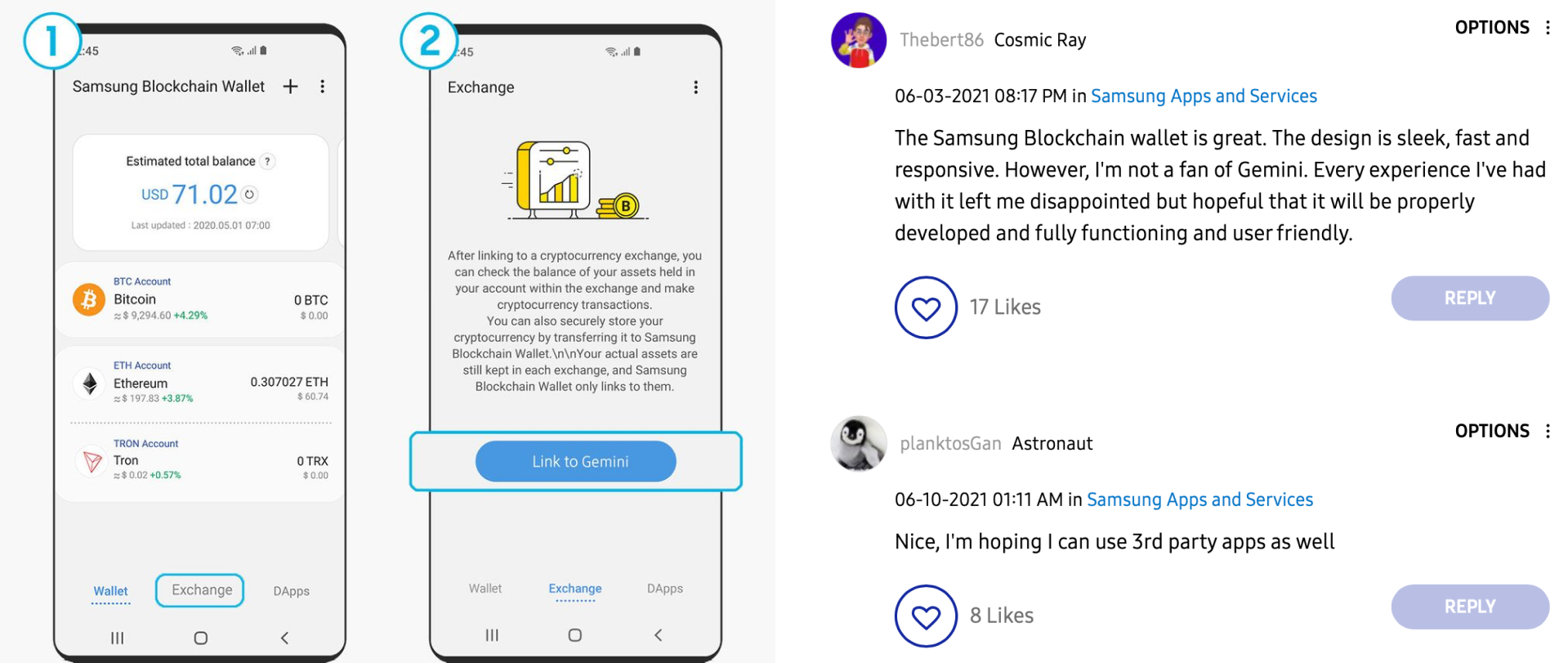
Project approach
In the early stages of the project, I worked closely with the product stakeholders and developers to devise practical solutions to problems. As we progressed, we realized that shifting all blockchain-related features to the new service roadmap might require a more pragmatic approach. Consequently, our team proposed a design strategy to connect external exchanges and our Blockchain Wallet, facilitating a complete view of digital assets.
Design exploration
While creating design iterations, I focused on balancing two key objectives.
- Simplify user access to digital assets and payment cards, IDs, or passes with a single swipe.
- The method for adding or managing assets should be noticeable but not too engaging compared to other features.
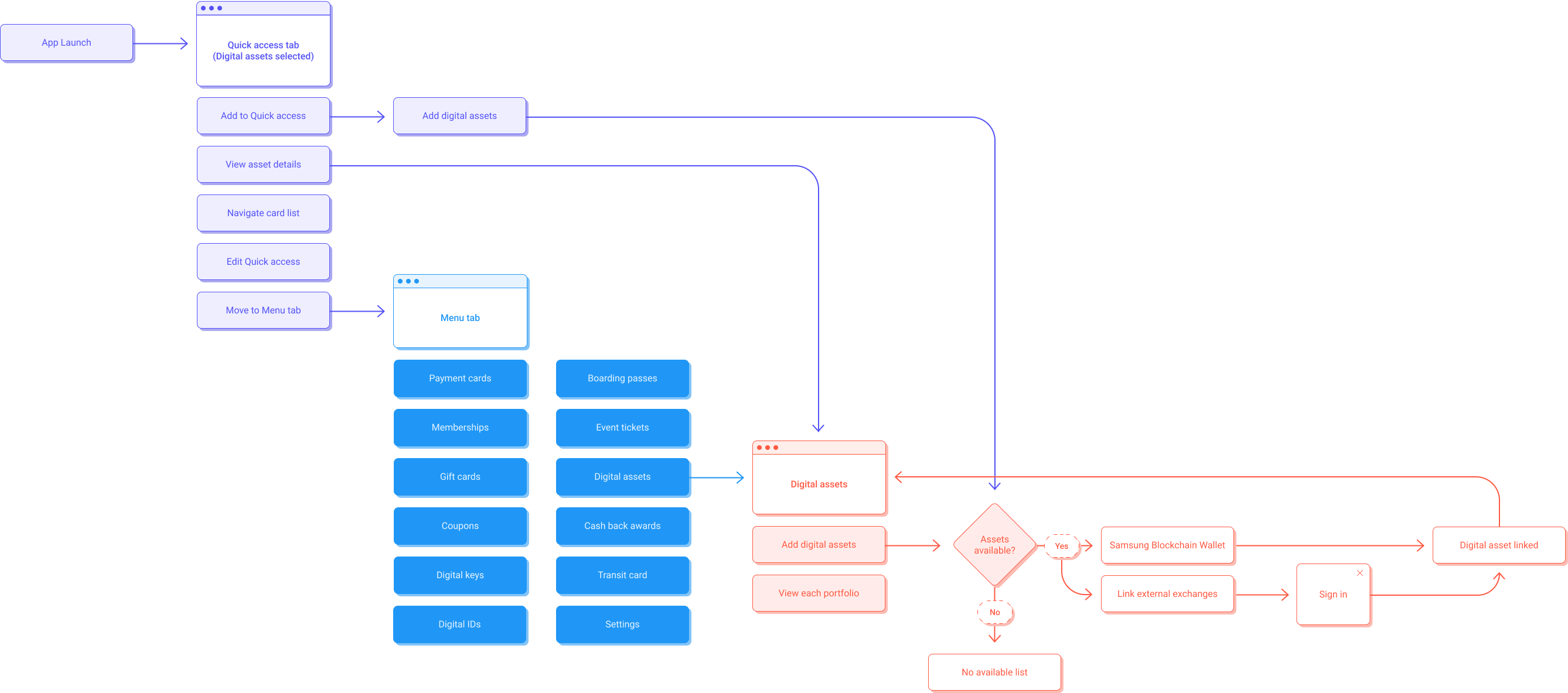
My goal was to present information clearly and concisely while maintaining accuracy. The concept of the new service is to summarize users’ cryptocurrency portfolios from various external exchanges and provide their total value according to the current market price. I designed a UI that allows users to easily monitor and access each portfolio after launching the app.
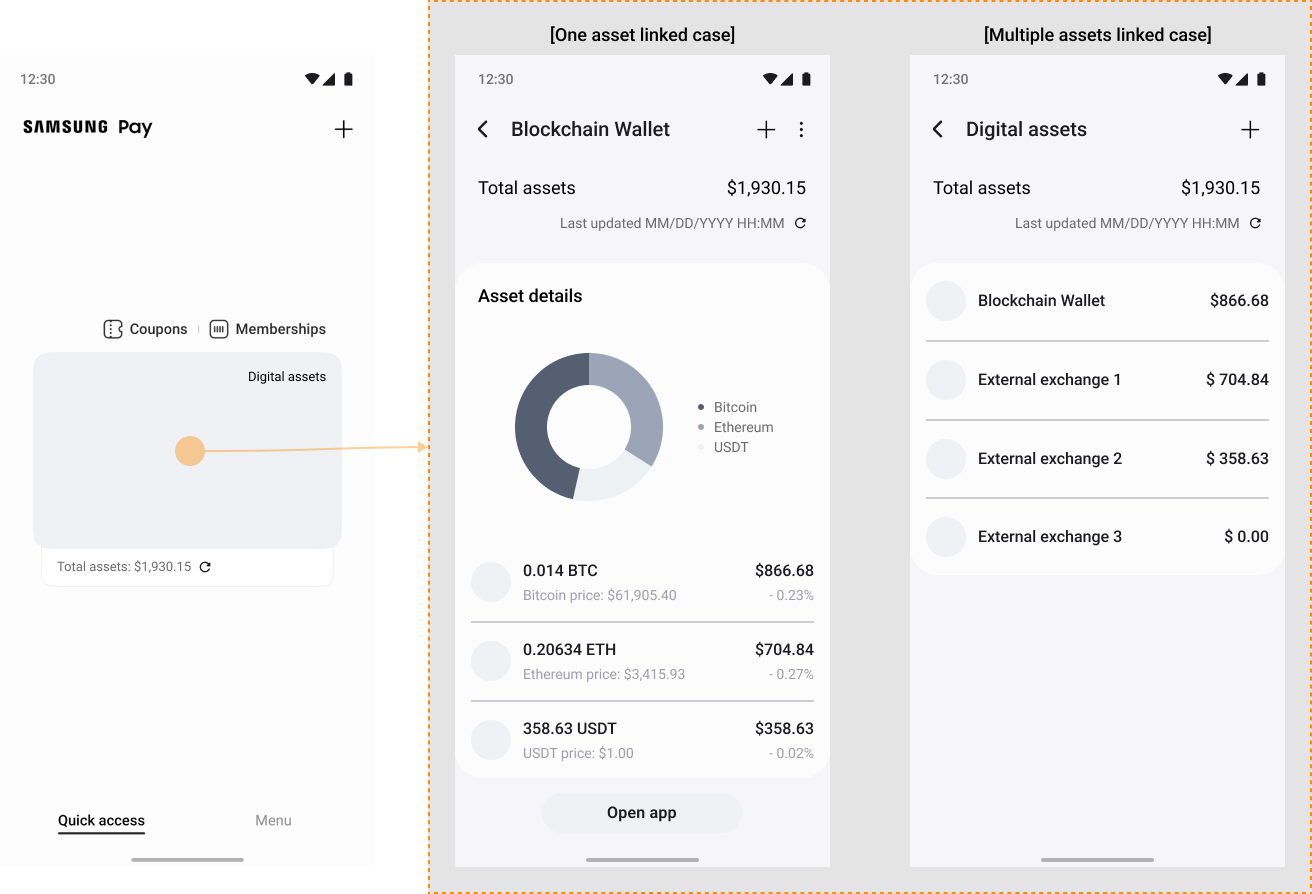
Additionally, Our team went through several design explorations and iterations to create standard rules for arranging information in a card format. It was particularly challenging with photo IDs or boarding passes, as they contain much more information than credit or debit cards. As a result, the logo is placed in the upper left corner, while the text displaying card properties is positioned in the upper right.
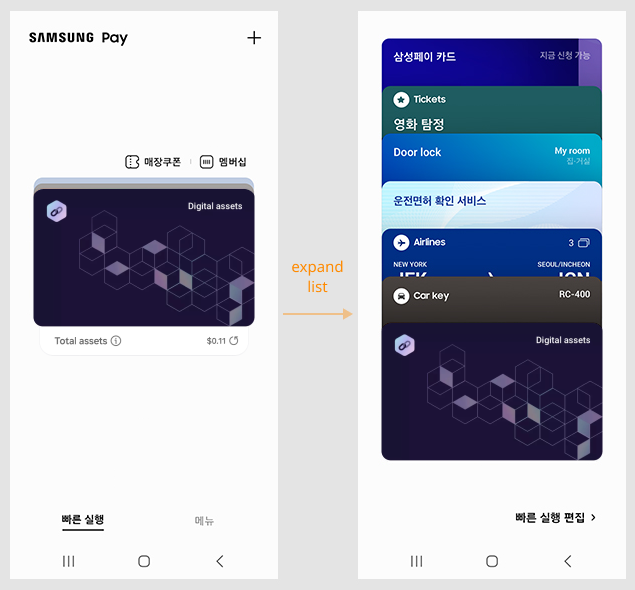
The final product
In June 2022, Samsung Wallet replaced Samsung Pay, supporting various passes, IDs, and digital assets. With this update, users can easily keep track of their digital asset portfolio from their Blockchain Wallet without opening it. Since the launch, we have seen a 4% increase in the number of Samsung Blockchain Wallet users.
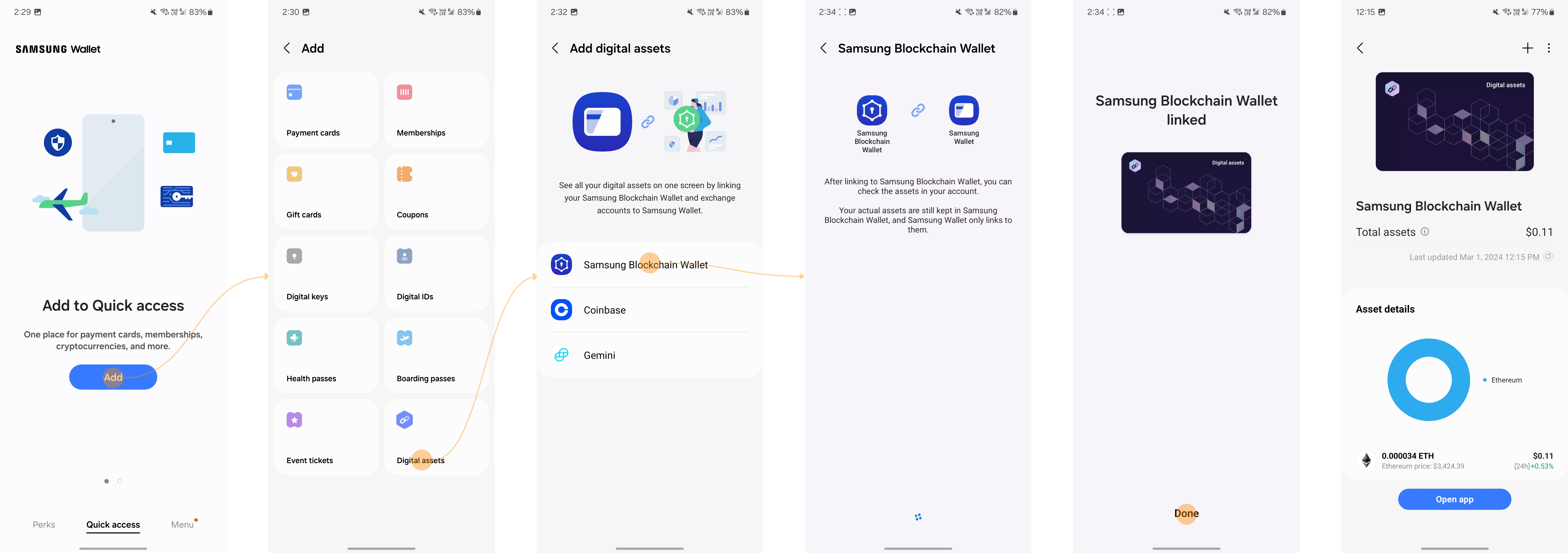
Samsung Wallet also enables users to monitor total cryptocurrency values across multiple significant exchanges. Since the list of supported partners is wider than Blockchain Wallet and with the support of various promotions in Korea, nearly 7% of Samsung Wallet users have added at least one external exchange to their portfolio. The list of exchanges varies by country and is expected to grow over time.
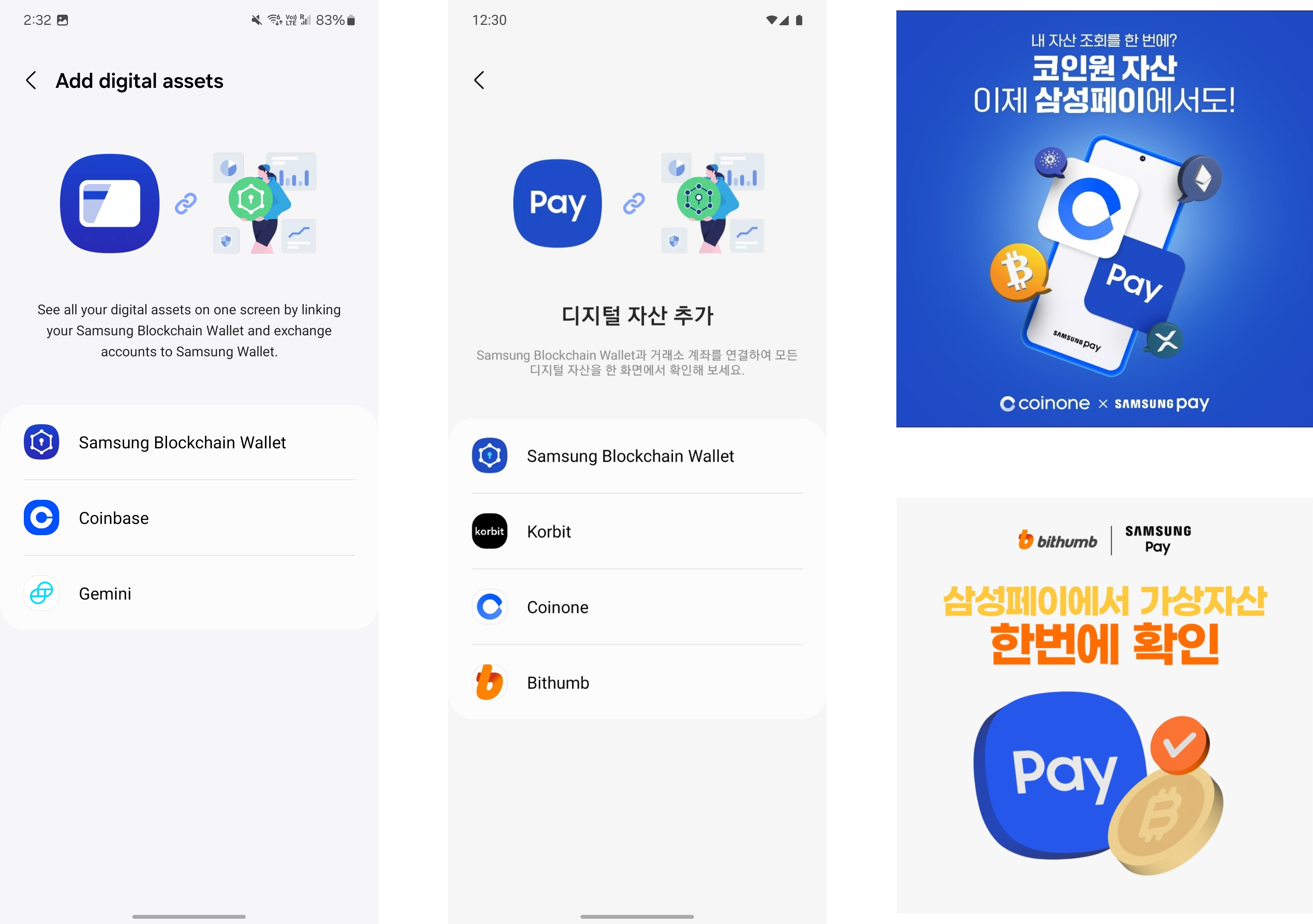
After launching the Samsung Wallet, I optimized its user interface for new devices, including foldable smartphones. The new Galaxy Z Flip5 had a unique feature—a 3.4-inch Cover Screen—so enabling users to access Samsung Wallet without opening the phone was crucial. Our team collaborated with multiple engineering teams to make this possible, and we successfully allowed users to make purchases, use membership cards, and track digital assets with a simple swipe-up on the Cover Screen.
